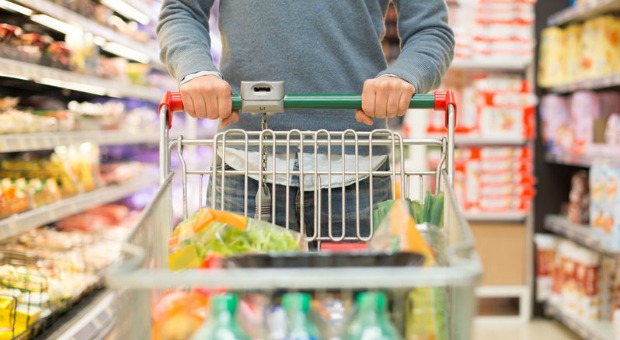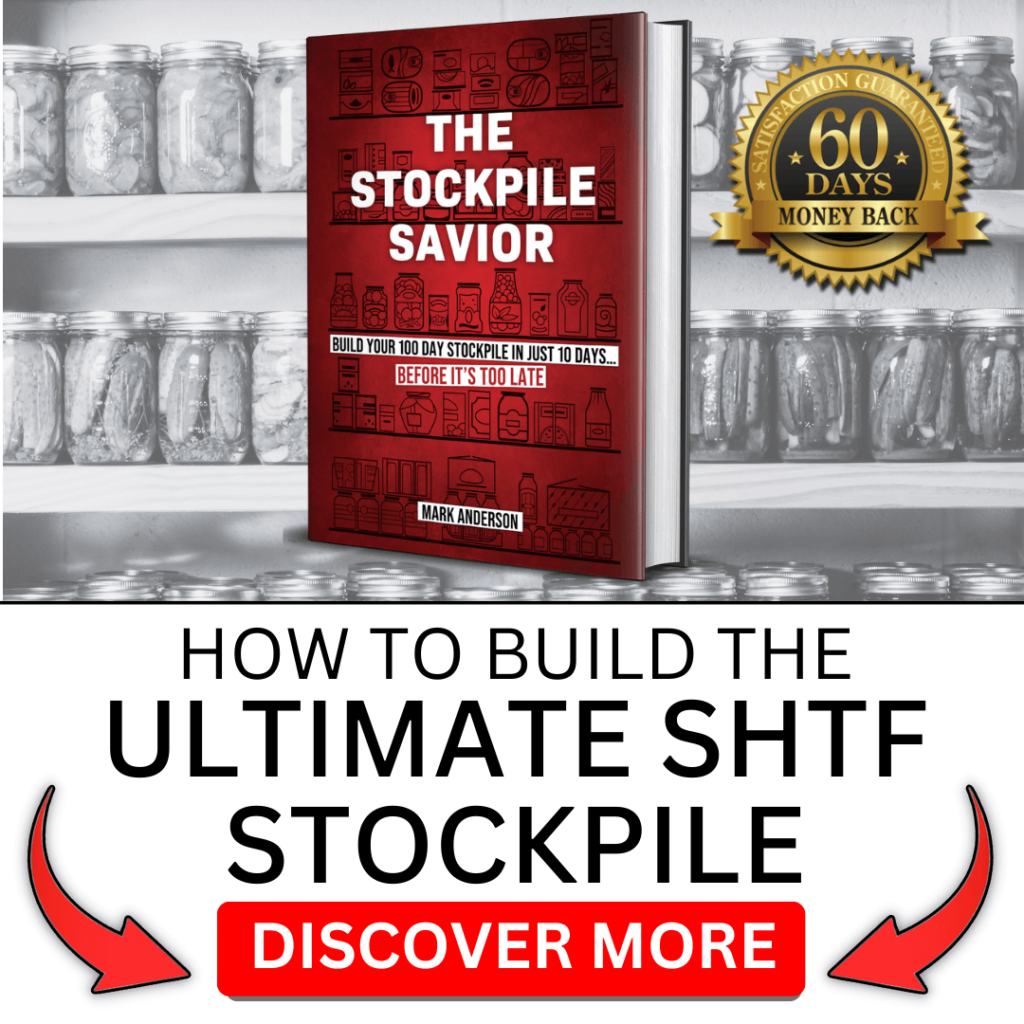You want to build your stockpile in case SHTF, whether it’s for a small emergency such as a storm or for an event that changes the world as we know it.
There really isn’t one correct way to do this, but there are some common mistakes that many people make when shopping to stockpile supplies.
These mistakes can be costly, both in terms of money and in terms of food loss or inefficient storage space utilization.
Don’t worry though, today we’ll address some of those common mistakes people make when stockpiling so that you can avoid them.
1.Paying Full Price
This actually isn’t a mistake if you really want to spend a ton of money that you don’t have to. For most of us, though, saving money is just part of the way we live. It’s a form of reducing waste and making the most of what we have. Rarely is there a valid reason for paying full price for anything that goes in your stockpile.
The easiest way to save money is to take advantage of buy-one-get-one-free deals. If you only need one jar of spaghetti sauce, put one in your stockpile. If you need two jars, then pay for two and put the two free jars back. If you watch your local sales flyers, you’ll know what’s on sale.
Chain drug stores are great places to pick up BOGO first aid supplies, cleaning supplies, and personal hygiene items, so this doesn’t just apply to food.
Using coupons is another way to build your stockpile in a hurry, especially when combined with sales and BOGO offers.
Yard sales, Craigslist, Letgo, Freecycle, and other places to buy second-hand items are great resources for such things as generators, tools, blankets, ATV’s, building supplies, and just about everything else you may need.
2. Buying Just Because Something is Cheap
Many people make the mistake of scooping up things that are cheap just because they’re cheap. For instance, I saw what must have been an extreme couponer buying at least 20 tubes of hemorrhoid cream because it was on clearance and she had coupons.
Seriously, if you need that much hemorrhoid cream, you have a bigger issue than a coupon addiction. Because I enjoy couponing, I know many people like this, and even if you only pay 20 cents per tube, it’s a waste of money if you’re not going to use it.
I’ve seen the same thing with unpopular food items such as lima beans, hominy, and cranberry sauce. It’s all well and good to stock those items if you enjoy them, but the point of stockpiling food and personal items is so that you’ll have extra when you need it.
Why buy lima beans and hominy just because they’re cheap if they’re not something that you’re going to eat between now and the zombie apocalypse?
This is also a buyer-beware issue when it comes to first-aid supplies. Often, these items are on clearance for a reason: they’ve been on the shelf for too long and the store needs to get rid of them. Buying old items is a waste of money because the shelf life is already reduced.
3. Buying Stockpile-Only Items
This goes hand-in-hand with the lima bean issue above. Every item in your stockpile should be something that you use or something that has high trade value. Exceptions here may be first aid supplies, but even many of those items have a shelf life; bandage tape dry-rots or turns into a roll of goop after a few years.
Your stockpile should be fluid; though you’re certainly working to build volume, you should also be rotating it using the first-in-first-out method. This means that you use the oldest item (the first in) before you use newer, identical items.
The easiest way to keep track of this is to place new items behind old items, then use the ones in the front. This keeps your supplies fresh. Are you really going to eat 10 cans of hominy? If so, then buy them, but if you’re not a fan, then it will be more money-wise to buy items that you’ll use.
4. Buying the Wrong Types of Food
Many foods come in several different forms. For some foods, one item is just as good as the next.
For others, there’s a huge difference in shelf lives. A good example of this is instant rice and instant oats. Both of these items have much shorter shelf lives than their standard-cook counterparts. Do your homework.
Also, are you stocking a freezer full of vegetables, fruits, and meats? Remember that if you lose power, those foods will need to be eaten within a couple of days. Anything left after that will be waste unless you plan to can them quickly over an open fire or some other heat source.
It’s better when buying items for your stockpile to buy foods that don’t require refrigeration.
5. Not Buying in Bulk
While it’s true that I’m a big proponent of buying items with coupons, it’s often cheaper in the long run (unless you’re getting the item for next to nothing) to buy in bulk.
Though that 10 pound bag of rice looks huge, it’s probably only seven dollars or so. If you look at the cost of smaller bags, even when they’re on sale, it’s usually more cost-effective to buy in bulk.
Another advantage to buying in bulk is that you can store the item in a 5-gallon bucket or air-tight bin. Of course, you can pack the smaller bags in there, too, but you still have the cost to consider. Shop around.
6. Not Buying a Variety
You need to have a well-rounded food supply. This means stockpiling fruits and vegetables in all colors, because different colors have different nutrients. Make sure that you have plenty of every color stockpiled.
Another issue that will be a concern is that you can get so sick of eating one food that your brain will actually make you physically ill when you try to eat it. There are accounts of people in famine situations dying of starvation when they had a plentiful supply of rice, but only rice.
You can avoid all of this by simply stocking a wide variety of food.
7. Not Considering Nutritional Value
There’s no doubt that there are many delicious foods out there that can be purchased for very little money, but beware of the nutritional value.
Some foods, such as spaghetti rings, are full of fat, cholesterol, sodium, and artificial chemicals but have practically no nutritional value. Avoid these.
Before you buy a can or jar of food, look at the label and decide if that food is worth the space that it’s going to consume in your stockpile. If not, then skip it; you need to use that space judiciously for foods that will nourish your body.
8. Sacrificing Quality for Low Price
There’s most certainly something to be said for the expression, “you get what you pay for”. Some items, such as gasoline and canned foods, are what they are no matter what you pay for them. In these cases, you should definitely go for the lower price.
However, there are certain cases where it’s better to pay for quality, or to buy used. Tools and hardware (nails, etc.) are definitely in this category, as well as equipment such as chainsaws. Other items in this category are water barrels, weapons, and rope.
9. Not Having a Well-Rounded Plan
Everybody has the vague image of a stockpile that will get them through an emergency, but many people make the mistake of gathering stuff willy-nilly. If you do it this way, you’re going to end up with 42 cans of green beans with no can opener, a box of nails but no hammer, and some bandages without any tape.
Sit down and develop a list based upon what you’re prepping for. Figure out how much food and supplies you’ll need for each day, then think of other items that go along with those.
Items such as can openers, cooking utensils, and fuel for cooking, and then think of what you may need for first-aid and medicine, and for cleanup or survival.
Imagine yourself completing a task. If you’re going to cook rice, you’re going to need rice and water of course, but you’ll also need salt, a pan, heat, and maybe some vegetables. If you’re adding vegetables, you’ll need a can opener and you may want some other seasonings.
If you’re going to board up a window, you’ll certainly need wood and nails, but you’ll also need a hammer.
It’s these little details that you need to think of, but once your brain starts working that way, it will come more naturally to you.
It will take you days or even weeks to come up with your initial list but once you start it, you’ll be able to start stockpiling while you continue to work on it.
10. Don’t Put Stockpiling Off!!
This is absolutely the biggest mistake people make! Even if you can only set aside a few cans of food per week, do so. A box of bandages is only a couple of dollars.
Add something to your stockpile every time you go to the grocery store or drug store. There’s always something that you can get for $1, and every item makes you a bit better prepared than you were when you left the house that morning.
These are some of the most common mistakes that people make when stockpiling for an emergency; now that you know them, avoid them! This was just a starter list to get the conversation going, so feel free to add other mistakes or suggestions for stockpiling in the comments section below.
And if you want to discover the long-forgotten secret that helped our ancestors survive harsh times and will help you improve your life and survival skills, click the banner bellow!






















































































Just a couple of comments. You say never store water in something that has had other things in it but I would switch that to not storing drinking water. While you CAN get germs growing in containers that have stored juice ect this water would be completely acceptable for washing or cleaning and to be honest if your prepping you should have a water filter.
Another is all sites talk about making sure you have can openers for your veggies but commercially canned veggies have very little nutritional value and tons of salt and other chemicals. Freezed dried veggies would be a much better choice. Of course if canned is all you have then that’s what you’ll eat
Nicely done. Verity IS the spice of life. Couple of observations, water storage. When in doubt, filter it out. Got cases and cases and cases of bottled water. Some five years old now, maybe older.
Also got a dozen filters. From big berkeys to lil hand held’s I pass out to my relatives for BO. If your concerned filter, or boil. Going without water ain’t happening. Where I live ” above 4500 ft, mid winter water becomes solid, and difficult to manage. Hence lots of water stored.
A warm garage in the summer, is also a cold garage in the winter, understand this, use the info to your advantage. Crawl spaces, or under ones house is confined and at least at my house a very useful area for storage, no bugs, nor critters and well Insulted from above.
The differences between your local and mine are east VS west I’m relatively high up, and in semi isolation.
DDW